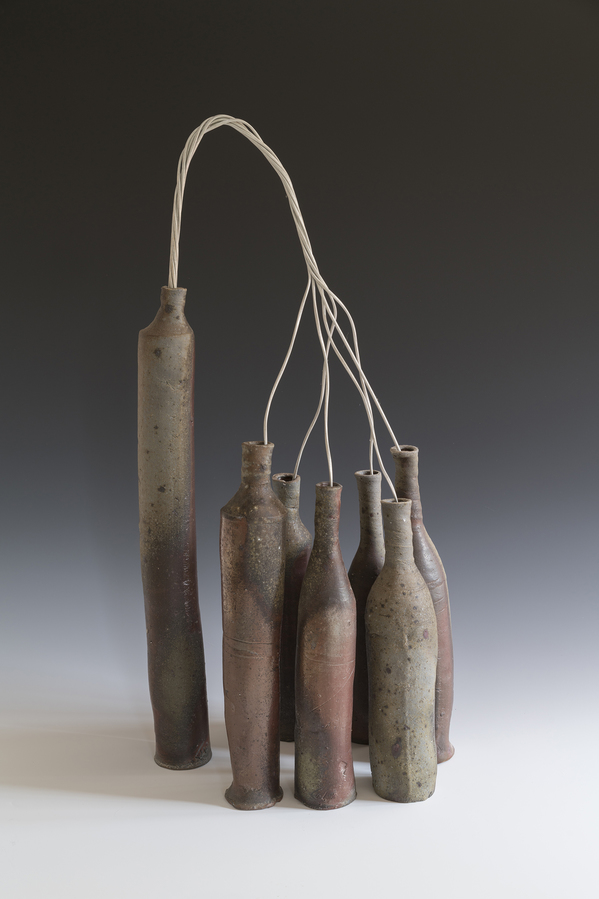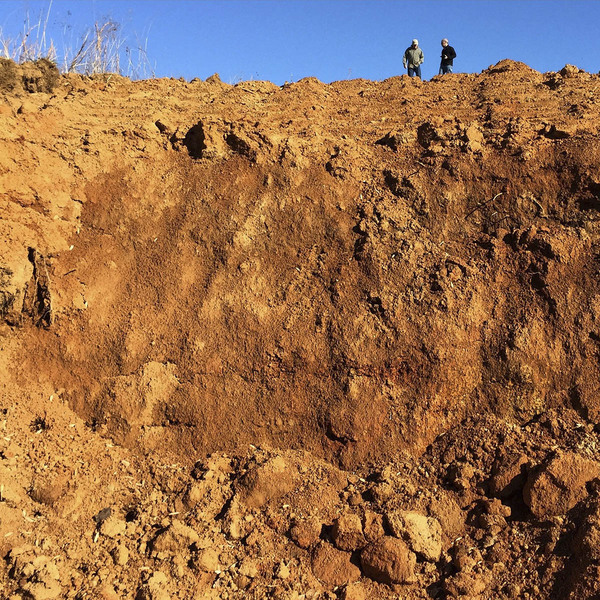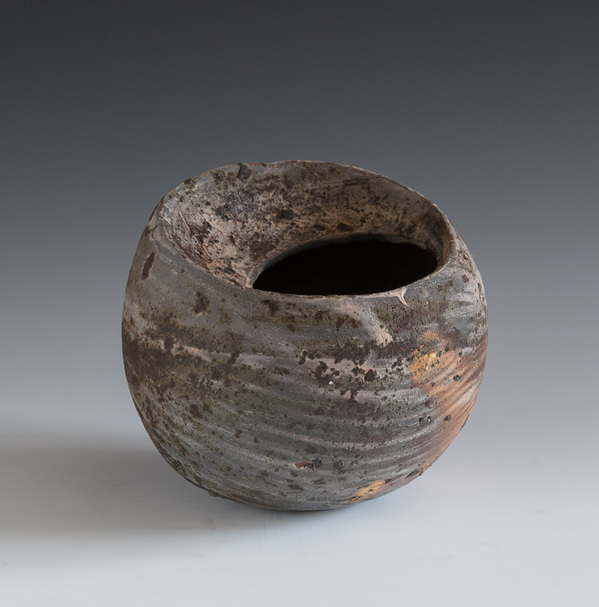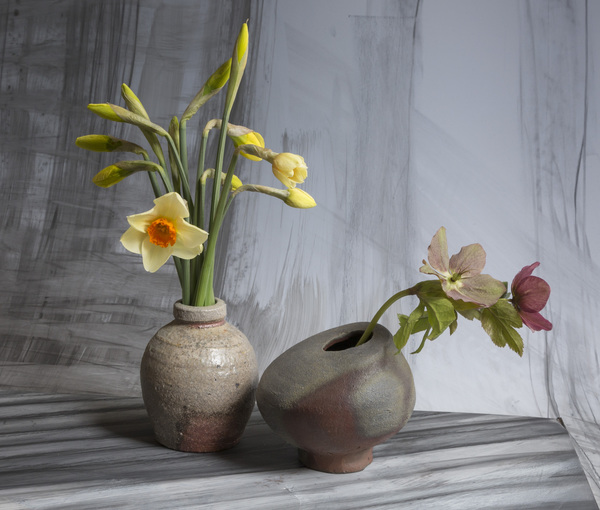[This piece was written in conjunction with the exhibit,
Topsoil, at Clayworks in Baltimore, March 11 to April 29, 2017]
As a gardener, topsoil makes
me think of trying to counteract the dense red Virginia clay of our local terrain.
I am constantly adding compost to open the dense clay-like dirt. Often I feel
that I work harder on the soil than I do on the plants I am growing. Some say
that is the sign of a good gardener. When I imagine good topsoil it's very
fertile. I have come to think of clay similarly. How does the clay fertilize
the seeds of my ideas, enhancing their growth? How does the kiln fire interact
with the clay to enrich the object?

Over the years, in my
search for materials we have told our builder, farmer and excavating friends
that we are looking for clay. Some call us when they find these super smooth,
plastic veins of clay in their work. A dairy farmer once called to say he had a
leak in his water line to the barn and they had to dig up his whole barnyard.
It was a difficult clay, locally known as blackjack--super sticky when wet and
killer hard when dry. I went to visit and he filled my pickup truck with his
loader saying, "I would love something of beauty to come from this giant
mess." Even though this clay
was cantankerous, his desire became a reason to find a way forward.
Oftentimes the clay that
we have gotten from these calls and deliveries has been too plastic and too
smooth for the variety we desire. I have come to realize that our search is for
more of a plastic soil than a pure clay. A material with character, composed
with a variety of naturally occurring grits that can open up the smooth, tight
surface of our standard body yet still accept with grace, the ash deposits of our
kiln.

When I buy cider or
vegetables at our rural farmer's market and a vendor tells me their produce is
local I once imagined they meant a few miles from our location. I now know that
in fact, local cider might be coming from Pennsylvania, 100 miles away. So in
my clay search I have questioned the use of the term local materials. For me,
local has come to mean intriguing and accessible. That might be a two and a
half hour drive to Perryville, Maryland to the Stancills mine, or even five
hours to North Carolina for tantalizing new ingredients. Local has come to mean
the clay is of aesthetic use and of practical availability.
Nonetheless, close-by
sources are exciting. I have been thrilled over the last year to visit a slowly
developing pond site twenty minutes from our studio. As the excavator digs and
shifts soil to create a pond I have been deeply moved by the swales of soil and
dozer scrapes of the plastic clay. I bring home chunks with leaf and stick impressions.
There is a quality to the raw soil, the ochre, orange and sometimes blue tones
of the Virginia landscape beneath the topsoil that makes my imagination fly. I
photograph tire tracks and bird prints, shadows and reflections as if each mark
is a giant finger-ring or thumbprint.

In 2011 Warren and I were
traveling with our daughter in southern France when we sought out the town of
Roussillon where ochre is mined. We went to a closed mine turned into a park where
the shades of Naples yellow, sandy orange, or red were extensively exposed, contrasting
starkly with green pine trees and brushy undergrowth. The sandy soil softened
any sound and once again I found a state of wonder. I came to realize that I
draw inspiration not from local materials, but from the complex qualities of
raw, naturally occurring materials pregnant with potential. The piles, the gullies
of erosion, the solid rocks contrasting with the sandy dunes were all absurd
inspirations for how I work in my studio with clay. Without any plastic bags to
collect samples, I had to memorize the sensations that filtered into my mind's
eye.
Since I was in my 20s I
have often looked to my experience of painting in France as an inspiration to
my work in clay. I studied painting in Aix-en-Provence where Cezanne painted. I
often stood and looked at his landscape motifs with a reproduction of a
painting in hand and realized how much his work was a direct response to what
he was seeing and how it moved through his body to his hand and brush.
As I work in Virginia and imbibe
my local landscape, motifs move from my imagination out my hand. When I use
found clays it is my hand collaborating with the material that creates a way of
working. Firing the anagama is a collaboration of clay, hand, heat and ash.

I have never been a purist
in my approach. I mix and match in intuitive ways to get to the ideas that
simmer in my head. For many years we have had a working clay body that responds
well to our methods of forming and firing unglazed pots in an anagama kiln.
This starting concoction is mixed by hand and pugged using industrially
processed dry clays and feldspar. Departing from that basic recipe we have always
sought to work with natural variations, adding portions of found or unprocessed
clays. We are always searching for a balance between the wild qualities of
unprocessed materials and the higher purities of industrial sources. In my work
I search to capture my visions of natural erosion or even human-made patterns
of excavated materials. Through experimentation I find ways of incorporating
wild materials within and on the surface of my pots. This search and constant material
evolution has become a fertile source for incorporating change in our work, creating
excitement in each cycle of making and firing.
 Stone
Stone


